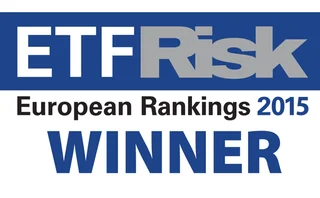
A sterling effort
Barclays Global Investors is hoping that sterling investors will warm to its new exchange-traded fund, the first sterling-denominated fund of its type. But some question whether a fund of 40 long-dated names will be liquid enough. Nicholas Parsons reports
Until now, there has been no way for sterling corporate bond investors to trade a basket of bonds in one transaction; neither of the two main tradable indices, Dow Jones Trac-x and iBoxx, have sterling-denominated indices, although both are understood to have looked at the idea.
Investors are quietly enthusiastic about the launch, with most viewing it as a small but significant step. “We are always reticent about new products but anything that helps our allocation process going forward is welcome,” says one fund manager. “Probably, like most investors, we’ll see how it goes and whether it builds up a head of steam.”
Exchange-traded funds (ETFs) are index funds that are bought and sold like ordinary shares on a stock exchange and are a tool to gain diversified exposure to a market. In general, the argument for ETFs is that they give investors low-cost, simple and liquid access to a whole market in just one transaction.
“Once investors embrace the idea of fixed income – especially private clients – they can use ETFs as building blocks,” says Deborah Fuhr, executive director, global exchange-traded funds research at Morgan Stanley in London. “They can be useful as a core holding, to equitise cash or as a hedge.”
BGI is the world’s largest provider of fixed-income ETFs, with some $6 billion outstanding – roughly three-quarters of the global market. In July 2002, it launched the first of six fixed-income ETF products in the US and last year set up the first ETF that provides access to the euro-denominated corporate bond market.
Having rolled out euro and dollar funds, sterling was the next obvious step in the growing development of ETF products.
“It is important to build out a set so that investors get the exposure they want in the currency they want with the added ability for investors to play one market,” says Bruce Lavine, head of iShares in Europe. “It is a unique product that provides visibility and transparency and allows investors to access a diversified basket of corporate bonds in one trade. It is a low-cost tool and also provides investors with the flexibility to quickly make changes to their portfolio – ie, they can buy long or short.”
The sterling fund tracks the iBoxx Sterling Liquid Corporates Long-Dated Index. Barclays Capital and Dresdner Kleinwort Wasserstein are market-makers for the fund. The bid offer is 20bp and Isa and Sipp investors can buy it.
Investor welcome
Investors have welcomed an instrument that enables them to access the opaque sterling corporate bond markets. “We expect a wide audience because the sterling market can be difficult to access and there are limited derivatives available,” says Lavine.
BGI is looking to target the usual suspects: insurance companies, pension funds, wealth managers and hedge funds. “But we also believe it is a fantastic vehicle for retail investors; at 20bp it is so low cost compared with fund alternatives,” says Lavine.
Certainly one retail investor was excited enough to express his interest in an internet chat room: “This ETF looks quite good for an income seeker... estimated at 5.77% yield, income paid quarterly and investing in longer-dated triple-A and triple-B stock so it can be Pepped or Isa’d. What’s more it’s cheap to manage at 0.2% per annum, and with comdirect there’s no purchase commission.”
But institutional investors are more cautious about how quickly the product will take off. “It is a great development for the market and in time will become a widely used instrument, but we are not using it,” says James Foster, director, head of credit at Isis Asset Management in London.
It comes down to need, he says. “The only reason we would use it is if we hadn’t got the credit skills and wanted exposure to the asset class. We prefer to access individual credit rather than a basket of bonds. The second reason would be if we were pulling a substantial amount of cash. Maybe one day there could be reasons why we would go short: if you are taking out a lot of credit it could be useful as a credit tool – as a hedge against the underlying portfolio.”
Another London-based investor says that new products are always welcome – and a sterling one especially so, given that there is no tracker available. “It could be useful for small investors to get access to the credit market quickly,” he says. “This vehicle alleviates the need for clients having to ask for 40 offers; instead they can get in quickly with one offer, which should in turn lead to more liquidity.”
But he believes the ETF will have less to offer large institutional investors. “I don’t think 40 names will be enough to attract institutional investors. There a lot more than 40 names out there in the underlying market and if you are worried about those names, you make a policy decision to reduce or increase your exposure. Either that or you invest in CDSs, which offer more liquidity.”
There are also doubts about how liquid the fund will be. After all, most of the underlying bonds are long-dated. The decision to pick the iBoxx benchmark was taken, says Lavine, because of its multi-party pricing. It also reflects the preference of iShares’ clients for long-dated assets – notably fund managers.
But a major plus point is the fact that the average bond within the sterling ETF is longer than five years, meaning it can be sold as an Isa, which is a five-year retail investment product.
Nonetheless, Andrew Chorlton, fixed-income investment manager at Axa in London, is not too impressed. “We were hoping it would be a low-cost way of getting exposure to the corporate bond market and it doesn’t offer that,” he says. “It could be broadly useful if it got large inflows but we have a couple of concerns. Firstly, it doesn’t replicate the market because it doesn’t include securitised sectors or amortising bonds. That means it excludes a number of large bonds like pub deals and private finance initiative transactions, which is where much of the growth is.”
That could be a problem, says another fund manager, because structured finance bonds occupy about 10–12% of institutions’ benchmarks. But these bonds are tightly held and hard to source; the aim of the fund is to include only the most high-quality and liquid bonds, says Lavine. The iBoxx inclusion criteria stipulate a minimum rating of BBB– from Fitch and Standard & Poor’s or Baa3 from Moody’s, £250 million outstanding and a two-year maximum age since issuance. According to Lavine, those criteria have slimmed down the universe into a manageable amount.
There is a second area that concerns Axa’s Chorlton: “The way it was explained to us, the bid offer via the ETF is dependent on the underlying bonds. So it is no different in giving us any liquidity than us going to the market and buying the corporate bonds themselves. It is not index replication but quasi-index replication.”
Since allocation is concentrated and investors get what they are given, adds Chorlton, that does not provide – without any synthetic or derivative attachments – much over the underlying cash bond. If the bonds are bad ones, it could be even worse. If a bond loses its investment-grade status, it has to remain in the ETF until the end of the month before it is replaced which may result in forced selling at distressed prices.
There have been hiccups in the product’s promotion. Poor trading volumes forced BGI this year to close down ETFs it had launched in Japan and China. But, despite the reservations of some investors, it seems the spread of fixed-income ETFs is likely to continue. Last month, iShares listed its Dublin-based euro ETF in Italy, following its initial launch on the Deutsche Bourse last summer and London in the autumn. Lavine says iShares intends to launch the product around Europe to increase local investor access to the fund.
BGI has no immediate intentions to add additional currency bonds but will more likely embrace other asset classes. “Next up is to take fixed income into other areas where there is even less liquidity and transparency – like high yield and emerging debt perhaps,” says Lavine.
Only users who have a paid subscription or are part of a corporate subscription are able to print or copy content.
To access these options, along with all other subscription benefits, please contact info@risk.net or view our subscription options here: http://subscriptions.risk.net/subscribe
You are currently unable to print this content. Please contact info@risk.net to find out more.
You are currently unable to copy this content. Please contact info@risk.net to find out more.
Copyright Infopro Digital Limited. All rights reserved.
You may share this content using our article tools. Printing this content is for the sole use of the Authorised User (named subscriber), as outlined in our terms and conditions - https://www.infopro-insight.com/terms-conditions/insight-subscriptions/
If you would like to purchase additional rights please email info@risk.net
Copyright Infopro Digital Limited. All rights reserved.
You may share this content using our article tools. Copying this content is for the sole use of the Authorised User (named subscriber), as outlined in our terms and conditions - https://www.infopro-insight.com/terms-conditions/insight-subscriptions/
If you would like to purchase additional rights please email info@risk.net
More on Exchange-traded products
Realising the China opportunity
Webinar: HKEX
One size does not fit all: Smart beta explained
Sponsored feature: WisdomTree Europe
ETF Risk European Rankings 2015: ETF trading platform for institutional investors
Sponsored feature: Tradeweb
ETFs – Transforming the investment landscape in Asia
Sponsored survey analysis: Deutsche Asset & Wealth Management
Flood of oil ETF investors reshaping market, analysts say
'Massive' inflows cushioned oil price drop in early 2015, but could easily reverse
Currency-hedged ETF surge prompts hedging concerns
Eurozone QE programme prompts wave of investor interest
Currency-hedged ETF inflows boom
Investor interest sparks race to construct new products
Shanghai ETF option volatility spikes on China market fears
A crackdown on margin financing strengthens bearish sentiment
Most read
- Top 10 operational risks for 2024
- Top 10 op risks: third parties stoke cyber risk
- Japanese megabanks shun internal models as FRTB bites







